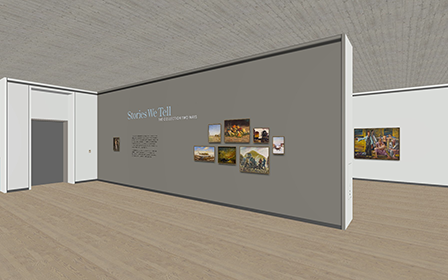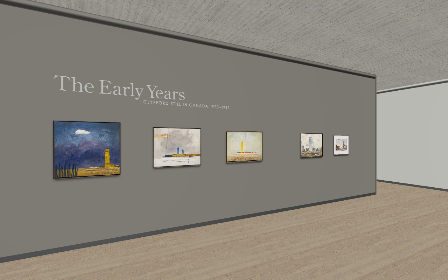Click on an exhibit below to explore it in a virtual version of the Clyfford Still Museum.

Stories We Tell: The Collection Two Ways
Museums go to great lengths to organize their collections: by culture, maker, nationality, chronology, stylistic movement, theme, and even size. While thoughtful organization of artworks is essential, each strategy has its own strengths and shortcomings. This exercise proposes the importance of a multiplicity of approaches when presenting artworks to an audience, so people with different learning styles and varying art experiences can relate to and understand the work in more than one way.

The Late Works: Clyfford Still in Maryland
The preceding three galleries highlight masterworks from the Museum's collection arranged in a chronological narrative to illustrate Clyfford Still's extraordinary artistic journey during the first four decades of his career. Works range in date from 1920 when Still was just sixteen years old to 1951, when the artist was living and working in New York City.

The Early Years: Clyfford Still in Canada, 1920–33
The remaining six galleries highlight masterworks from the Museum's collection arranged in a chronological narrative to illustrate Clyfford Still's extraordinary artistic journey. This story is told through the unique instance of being able to draw from virtually all of Still’s body of work—the 3,200 objects now on deposit at this institution. The installation begins in the Museum's fourth gallery, with Still's Depression-era figure studies that transform into quasi-abstractions in the 1930s and early 1940s. These culminate with Still’s groundbreaking wartime abstractions and monumental late paintings from the 1950s–70s.